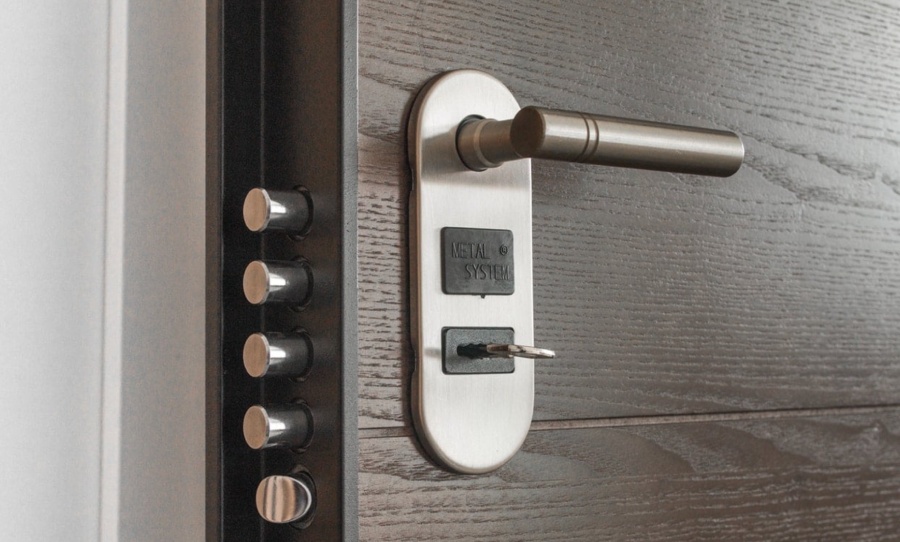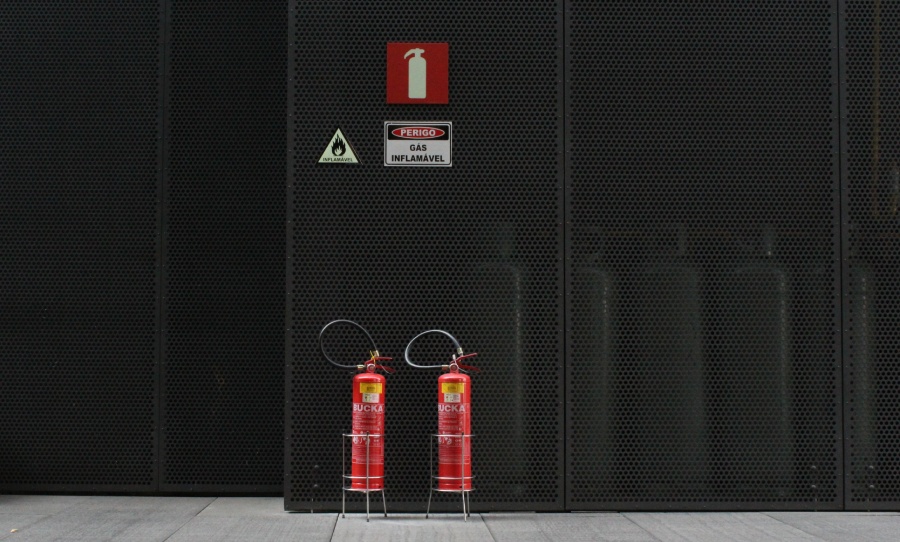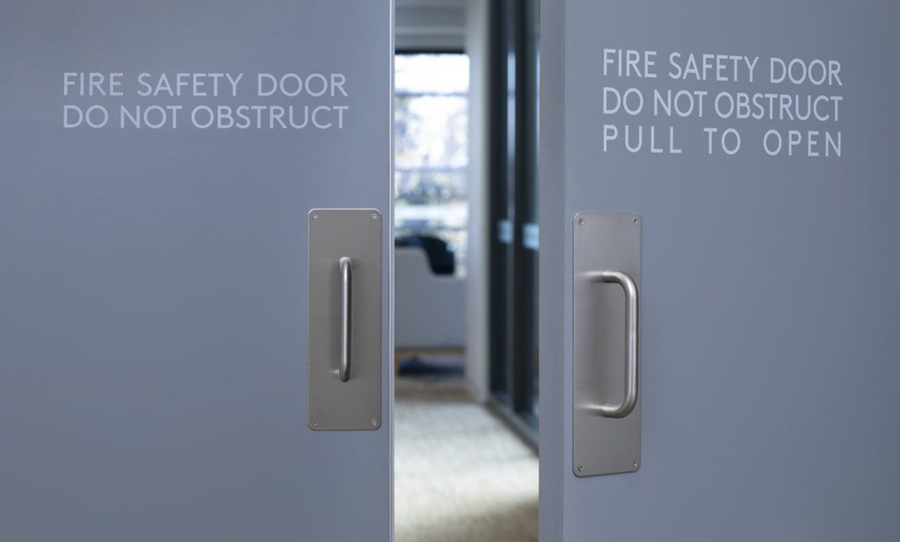What’s the Difference Between a Fire-proof Door and a Fire-rated Door?
Choosing the right fire door to install is an important decision, but there seems to be a universal confusion between fire-proof doors and fire-rated doors.
Choosing the right fire door to install is an important decision, but there seems to be a universal confusion between fire-proof doors and fire-rated doors.
There are varying types of fires that pose danger to infrastructure and its occupants. That’s why we have different types of fire extinguishers to deal with unique threats.
In order to protect a building’s aesthetic qualities and maintain the Building Code Of Australia, criteria must be met before installing fire doors.
While the most common type of fire can be extinguished with water, did you know that water can actually fuel other types of flame?
Ideally, you’ll never need to know what to do in the event of a house fire, but these steps could save your life if you get caught in one.
Whether your home or office is already equipped with a fire door, or whether you’re looking to have one installed, it is important to distinguish between truths and myths about fire doors.
Here are some of the most common misconceptions about fire proof doors.

Fire doors have special certifications that make them surface resistant against flames. Sure, flameproof paint will slightly slow down how quickly the door catches alight, but only a fire door will effectively stop the spread of the flame
The gap between a fire door and its frame do not have to be completely airtight, but it should fit as snug as possibly to limit the amount of smoke and toxic fumes that can pass through the door. The gaps should be no larger than 3mm around the frame and less than 8mm underneath.
This is one of the most common misconceptions about fire doors. Installing large doorstops will stop some of the smoke and toxic fumes from travelling into the next room, however the door will still quickly burn down and allow the fire, and fumes to engulf the room.
It doesn’t matter if your brother’s a carpenter and you’ve seen him install a door once or twice. Fire doors must be installed by a certified professional to ensure they will function effectively in the event of a fire. Get in contact with Fire Safe Doors to organise a hassle-free installation today.
Fire doors used to be unattractive, but now you find fire doors that will suit pretty much any interior with an abundance of designs available on the market.
Have a fire door related enquiry? We’re happy to help. Contact Fire Safe Doors at [email protected] or call (02) 9070 0732, and we’ll work through a plan for your needs.
In the unlikely event that you are in an office fire, the most important thing to remember is to stay calm. If you can avoid panic, everything else becomes easier.
Fire NSW have developed an acronym that is easy to remember in the event of a workplace fire, RACE.

If it is safe to do so, rescue anyone in the building who may struggle to exit the building. Prioritise those in immediate danger, or anyone who may have trouble escaping e.g. the elderly, anyone with a disability.
If fire alarms have not properly sounded, or there are parts of the building that have not been notified, it is important to ensure the entire building is aware of the fire.
The best way to do this is by notifying the staff member in charge and manually setting off any accessible alarms. Once that has been done, call the fire brigade as soon as possible on ‘000’.
If it is safe to do so, try to contain the fire as much as possible by closing the doors and windows that will stop it from spreading. It is important to know which doors in your workplace are fire safe, so you can prioritise closing them.
If you know how to use a fire extinguisher, and it won’t put you in unnecessary danger, use your workplace’s firefighting equipment to extinguish as much of the fire as possible.
Once you have rescued, alarmed, contained, and extinguished, you should:
Have a fire door related enquiry? We’re happy to help. Contact Fire Safe Doors at [email protected] or call (02) 9070 0732, and we’ll work through a plan for your needs.
As winter approaches, unfortunately house-fire season is near. So here are some fundamentals of fire safety that every child should learn.
Are fire doors a legal requirement? Why do we install them? What are the different options? Which fire door is the safest?
All these questions, and more, are answered below.

Before we run through the main types of fire doors, here’s a quick refresher on their purpose and functionality. Fire Doors are the best passive form of protection when it comes to preventing the spread of a fire.
Fire Doors are created and measured by the length of time they can withhold a fire. You can tell a fire door from a normal door because a fire door is self-closing and self-latching. This is crucial to their functionality because if the gaps aren’t sealed, the heat/fire will push through. So, what type of fire door is best for you? That depends on the type of building as well as the Building Code of Australia. Here are some of the most common types installed in Australia and where they are most frequently installed.
Glass Fire Doors are recommended for office buildings, shopping centres, open-place workspaces and other large scale buildings that require a high level of visibility.
Sliding Fire Doors are best utilised in crowded or small spaces, where room is paramount. Because a sliding door doesn’t swing open, it can be easier to open in an emergency situation. Sliding Fire Doors are usually present at hospitals, restaurants and parking zones.
Steel Doors are used when security is a top priority, as well as fire safety. Expect steel security hinged doors at petrol stations, communication centres, and other high-density places.
Have a fire door related enquiry? We’re happy to help. Contact Fire Safe Doors at [email protected] or call (02) 9070 0732, and we’ll work through a plan for your needs.
A fire door isn’t a device to be installed and forgotten. A fire door can only function to the fullest of potential if you understand its purpose, application and upkeep. That’s why we’re counting down the dos and don’ts of the crucial safety device.

Dos
Before installing a fire door, it’s important to read the relevant Building Codes of Australia. These codes will mandate the type and location of your fire door, in order to uphold the legal safety requirements.
Do hire a qualified installer to install and set up your fire door. Don’t be afraid to ask for credentials from your installer to ensure your door is installed correctly and legally.
Get your fire doors inspected regularly, as per the recommendation advice of your installer. This will ensure that your building will be up to scratch with the latest codes for when federal, state or local inspections are conducted.
It’s wise to keep all of your fire door documentation. They will be useful to your installers for when maintenance checks or repairs need to be made.
Don’ts
Under no circumstance should a fire door be locked. Fire Doors are designed to be easily opened and closed to prevent wasting precious time during an emergency. Even if everyone in your building has access to a key, the fire door should still remain unlocked at all times.
Never wedge open a fire door – this is actually illegal. Leaving a gap between the door and the building space immediately negates the functionality of a fire door. A wedged open fire door will provide minimal protection to you in an emergency, as the fire can spread rapidly past the fire door into the proceeding area.
Don’t leave anything in front of a fire door. One of the most important aspects of a fire escape plan is having a clear path to safety. If the path to your fire door is obstructed in any way, it’s important to remove these objects immediately. This is because they will pose as potential tripping hazards during an emergency, as well as increase the time it takes to evacuate.
Have a fire door related enquiry? We’re happy to help. Contact Fire Safe Doors at [email protected] or call (02) 9070 0732, and we’ll work through a plan for your needs.